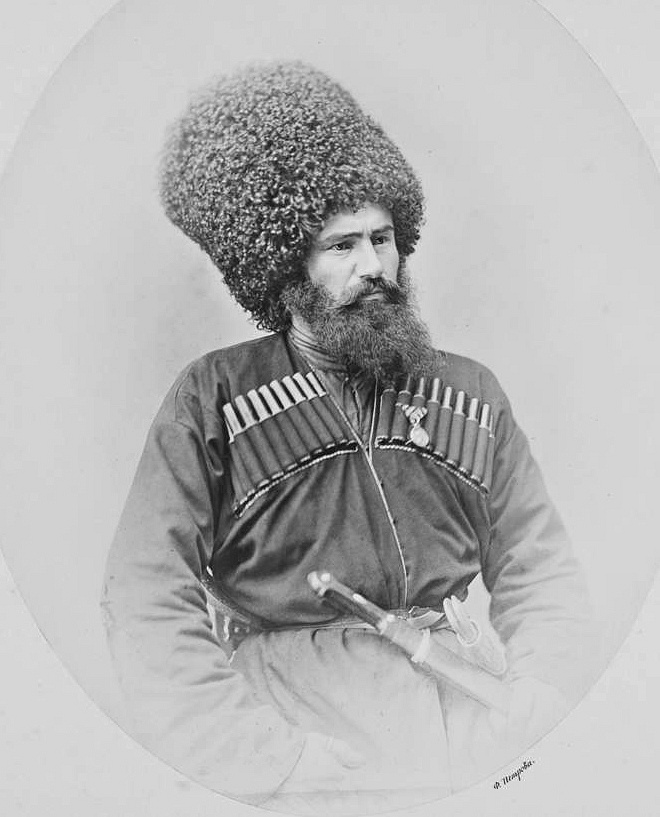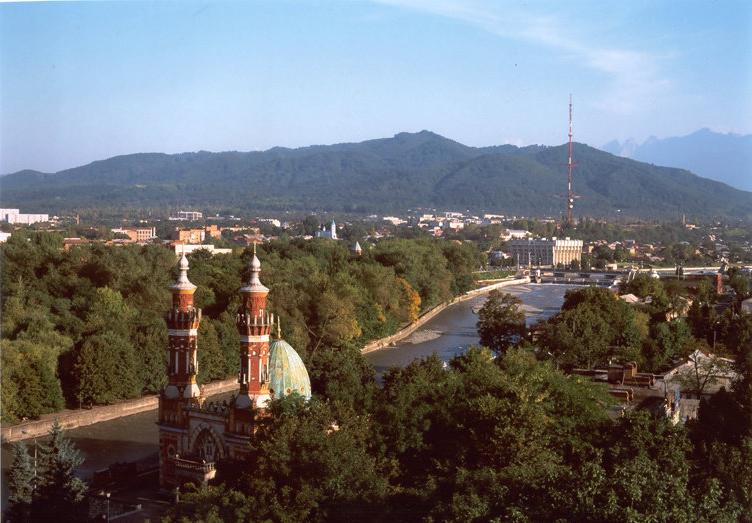|
Braguny
Braguny (russian: Брагуны, ce, БоргӀане, ''Borġane''; kum, Борагъан, ''Borağan'') is a types of inhabited localities in Russia, rural locality (a ''village#Russia, selo'') in Gudermessky District, Chechnya. Administrative and municipal status Municipally, Braguny is incorporated as Bragunskoye rural settlement. It is the administrative center of the municipality and is the only settlement included in it. Geography Braguny is located just above the confluence of the Sunzha River into the Terek River. It is located north of the city of Gudermes and north-east of the city of Grozny. The nearest settlements to Braguny are Staro-Scherdinskaya in the north, Khangish-Yurt in the east, Komsomolskoye, Gudermessky District, Solsabekan-Kotar in the south-east, the city of Gudermes in the south, and Darbankhi in the south-west. History Turkic-Kumyks, Kumyk version: According to one version, the area was settled by immigrants from the Crimea, and by pre-C ... [...More Info...] [...Related Items...] OR: [Wikipedia] [Google] [Baidu] |
Kumyks
, image = Abdul-Wahab son of Mustafa — a prominent Kumyk architect of the 19th century. , population = near 600,000 , region1 = , pop1 = 503,060 , ref1 = , region2 = , pop2 = 10,000 , ref2 = , region3 = , pop3 = 718 , ref3 = , langs = Kumyk language , region4 = , pop4 = 1200 , ref4 = , region5 = , pop5 = 481 , ref5 = , region6 = , pop6 = 360 , ref6 = , region7 = , pop7 = 33 , ref7 = [...More Info...] [...Related Items...] OR: [Wikipedia] [Google] [Baidu] |
Darbankhi
Darbankhi (russian: Дарбанхи, ce, Дарбанхи,, ''Darbanxi''; kum, Янгы Борагъан, ''Yañı Borağan'') is a rural locality (a '' selo'') in Gudermessky District, Chechnya. Administrative and municipal status Municipally, Darbankhi is incorporated as Darbankhinskoye rural settlement. It is the administrative center of the municipality and is the only settlement included in it. Geography Darbankhi is located at the interfluve of the Sunzha and Terek rivers. It is north-west of the city of Gudermes and north-east of the city of Grozny. The nearest settlements to Darbankhi are the city of Gudermes in the south-east, Ilinovskaya in the south-west, Vinogradnoye in the north-west, Chervlennaya-Uzolvaya in the north, and Braguny in the north-east. Name The name Darbankhi comes from the Chechen language and translates roughly as "healing water". History The village of Darbankhi was once called Istisu-Khutor. In 1944, after the genocide and d ... [...More Info...] [...Related Items...] OR: [Wikipedia] [Google] [Baidu] |
Chechens
The Chechens (; ce, Нохчий, , Old Chechen: Нахчой, ''Naxçoy''), historically also known as ''Kisti'' and ''Durdzuks'', are a Northeast Caucasian ethnic group of the Nakh peoples native to the North Caucasus in Eastern Europe. "Europe" (pp. 68–69); "Asia" (pp. 90–91): "A commonly accepted division between Asia and Europe ... is formed by the Ural Mountains, Ural River, Caspian Sea, Caucasus Mountains, and the Black Sea with its outlets, the Bosporus and Dardanelles." They refer to themselves as Nokhchiy (pronounced ; singular Nokhchi, Nokhcho, Nakhchuo or Nakhtche). The vast majority of Chechens today are Muslims and live in Chechnya, a republic of Russia. The North Caucasus has been invaded numerous times throughout history. Its isolated terrain and the strategic value outsiders have placed on the areas settled by Chechens has contributed much to the Chechen community ethos and helped shape its national character. Chechen society has traditionally been egalita ... [...More Info...] [...Related Items...] OR: [Wikipedia] [Google] [Baidu] |
Johan Peter Falk
Johan Peter Falk (26 November 1732 – 31 March 1774) was a Sweden, Swedish botanist and an Apostles of Linnaeus, apostle of Carl Linnaeus. His first name is sometimes spelled "Johann"; his middle name is sometimes spelled "Pehr"; and his surname is sometimes spelled "Falck". The genus ''Falkia'' is named for him. Biography Falk was born in the parish of Broddetorp in Västergötland, Sweden. He was the son of Peter Falck (1701–1754) and his wife Beata Winge (1706–1771). He studied at the University of Uppsala under Carl Linnaeus as served as a tutor for his son, Carl Linnaeus the Younger. He defended his dissertation in 1762. Falk traveled to Russia and in 1763 and became Curator for the Cabinet of Natural History in St. Petersburg. In 1765, Falck was appointed Professor in medicine and botany at the Russian Academy of Sciences. He participated in the expedition to the central Russian province of Povolzhye, Siberia, Altai Krai, Altay, and Transbaikal (1768–1774) organi ... [...More Info...] [...Related Items...] OR: [Wikipedia] [Google] [Baidu] |
Circassia
Circassia (; also known as Cherkessia in some sources; ady, Адыгэ Хэку, Адыгей, lit=, translit=Adıgə Xəku, Adıgey; ; ota, چرکسستان, Çerkezistan; ) was a country and a historical region in the along the northeast shore of the Black Sea. It was conquered and occupied by Russia during the Russian-Circassian War (1763–1864). 90% of the Circassian people were either exiled from the region or massacred in the Circassian genocide. The Circassians also dominated the north of the Kuban river in the early medieval and ancient times, but with the raids of the Mongol Empire, Golden Horde and the Crimean Khanate, they were withdrawn south of the Kuban, from the Taman Peninsula to North Ossetia. During the Medieval Era, Circassian lords subjugated and vassalized the neighboring Karachay-Balkars and Ossetians. The term Circassia is also used as the collective name of Circassian states established on Circassian territory. Legally and internationally, the Tr ... [...More Info...] [...Related Items...] OR: [Wikipedia] [Google] [Baidu] |
Shamkhal (title)
Shamkhal, or Shawhal (') is the title for the rulers of Kumyk people in Dagestan and North-East Caucasus during the 8th-19th centuries. By the 16th Century, the state had its capital at Tarki and was thus known as the Shankhalate of Tarki. Title's origin Arabic version According to historians V. V. Bartold and M. A. Polievktov, the title "shamkhal" might come from the name of the ruler Shakhbal appointed by Arabs in Kumukh. According to the chronicle with not established authorship '' Darbandnamah'', a brother of caliph Hisham ibn Abd al-Malik, named Moslim, commander of the Muslim forces in Dagestan, capturing Kumukh appointed Shakhbal as its governor. In Tarih-Dagistan, the name shamkhal refers to the name of the first appointee of Arabs in Kumukh, in the mountainous Dagestan. V. Bartold also stated, that the term "Shamkhal" is a later form of the original form Shawkhal, which is mentioned both in the Russian and Persian (Nizam al-Din Shami and Sharaf al-Din Ali Yazdi) sou ... [...More Info...] [...Related Items...] OR: [Wikipedia] [Google] [Baidu] |
Terek (river)
The Terek (; , Tiyrk; , Tərč; , ; , ; , ''Terk''; , ; , ) is a major river in the Northern Caucasus. It originates in the Mtskheta-Mtianeti region of Georgia and flows through North Caucasus region of Russia into the Caspian Sea. It rises near the juncture of the Greater Caucasus Mountain Range and the Khokh Range, to the southwest of Mount Kazbek, winding north in a white torrent between the town of Stepantsminda and the village of Gergeti toward the Russian region North Ossetia and the city of Vladikavkaz. It turns east to flow through Chechnya and Dagestan before dividing into two branches which empty into the Caspian Sea. Below the city of Kizlyar it forms a swampy river delta around wide. The river is a key natural asset in the region, providing irrigation and hydroelectric power in its upper reaches. The main cities on the Terek include Vladikavkaz, Mozdok, and Kizlyar. Several minor hydroelectric power stations dam the Terek: Dzau electrostation (in Vladikavkaz), ... [...More Info...] [...Related Items...] OR: [Wikipedia] [Google] [Baidu] |
Cumans
The Cumans (or Kumans), also known as Polovtsians or Polovtsy (plural only, from the Russian language, Russian Exonym and endonym, exonym ), were a Turkic people, Turkic nomadic people comprising the western branch of the Cuman–Kipchak confederation. After the Mongol invasion of Rus', Mongol invasion (1237), many sought Right of asylum, asylum in the Kingdom of Hungary, as many Cumans had settled in Hungary, the Second Bulgarian Empire playing an important role in the development of the state. Cumans played also an important role in (The Byzantine Empire, the Latin Empire, and the Empire of Nicaea, Nicaea Empire) Anatolia . Related to the Pecheneg, they inhabited a shifting area north of the Black Sea and along the Volga River known as Cumania, from which the Cuman–Kipchaks meddled in the politics of the Caucasus and the Khwarazmian Empire. The Cumans were fierce and formidable nomadic warriors of the Eurasian Steppe who exerted an enduring influence on the medieval Balkans. ... [...More Info...] [...Related Items...] OR: [Wikipedia] [Google] [Baidu] |
.png)




